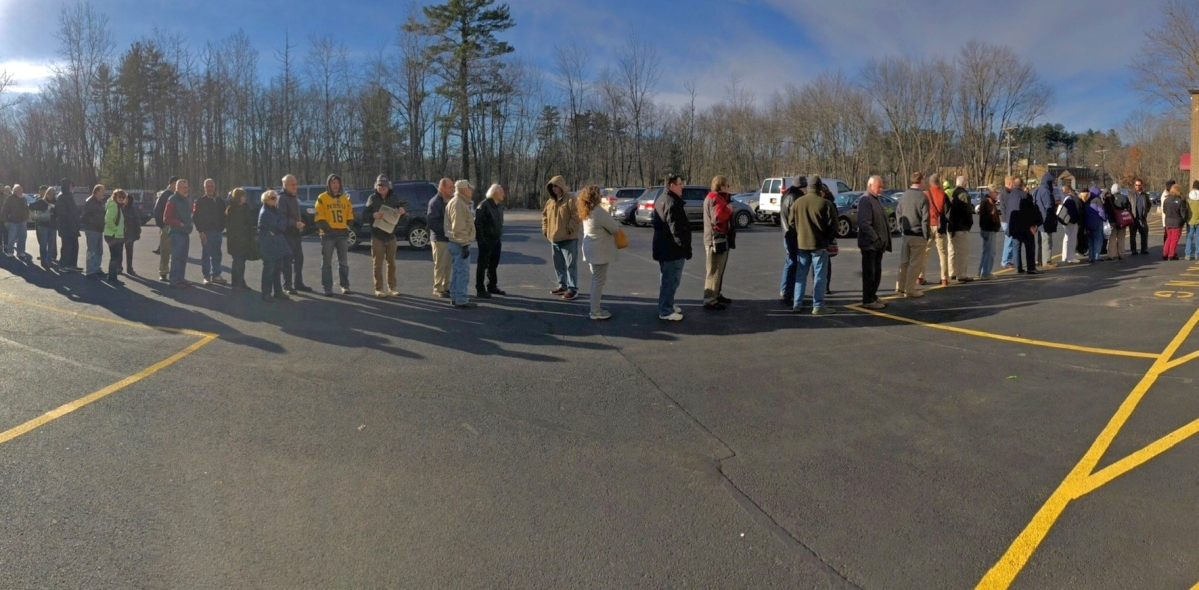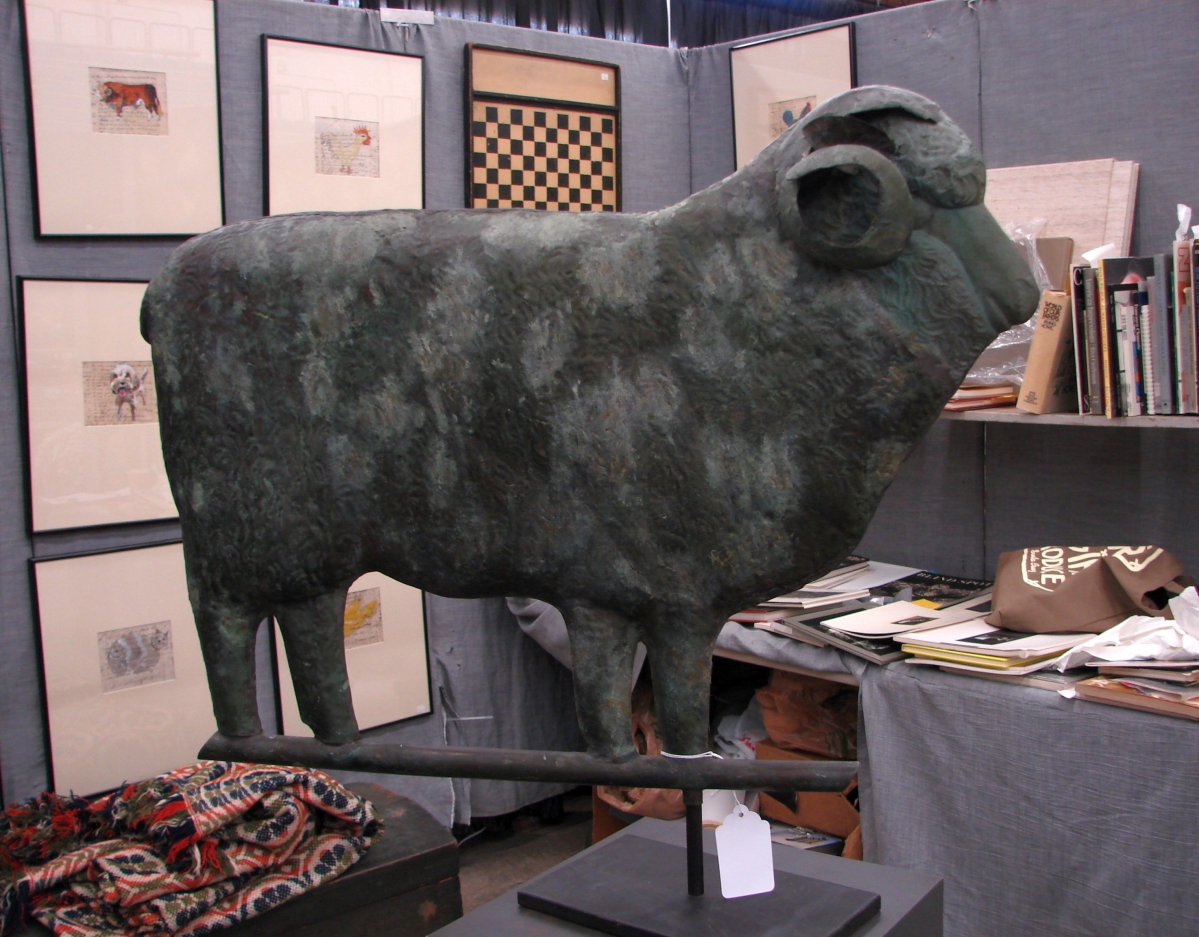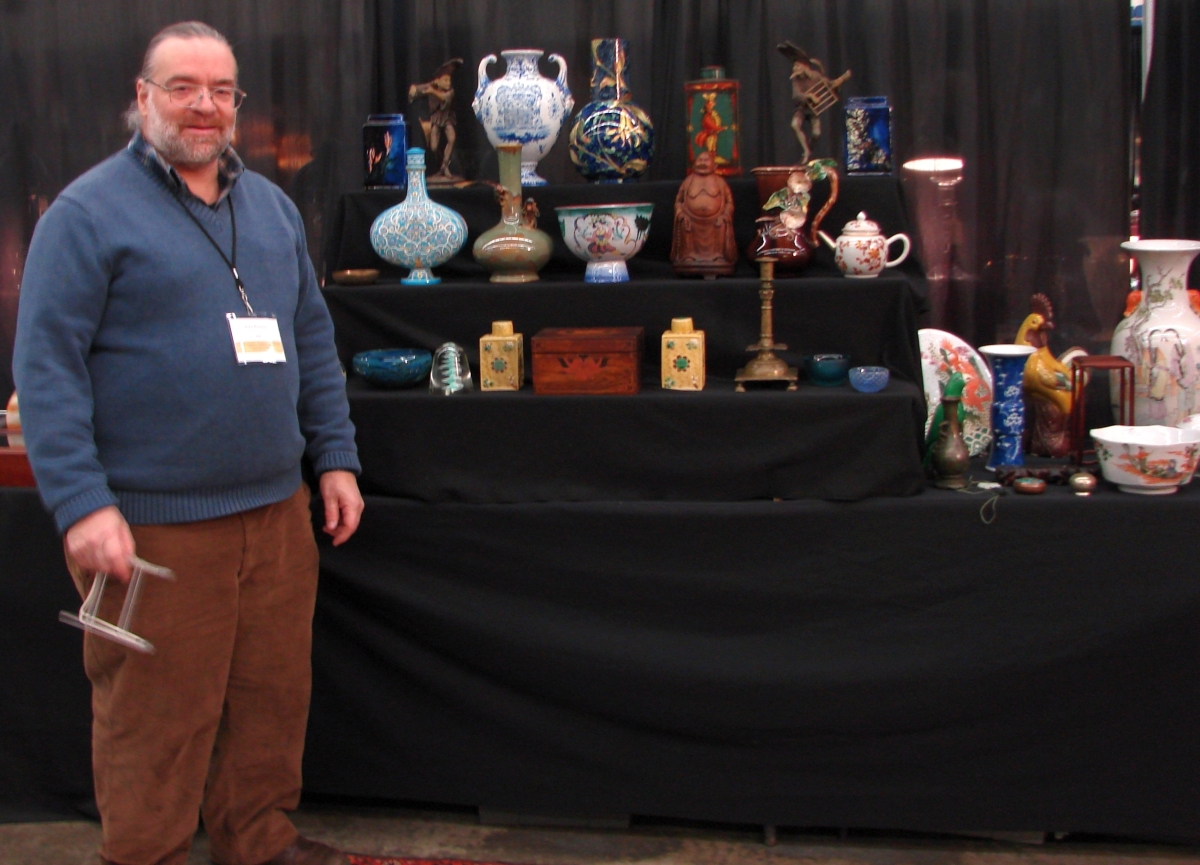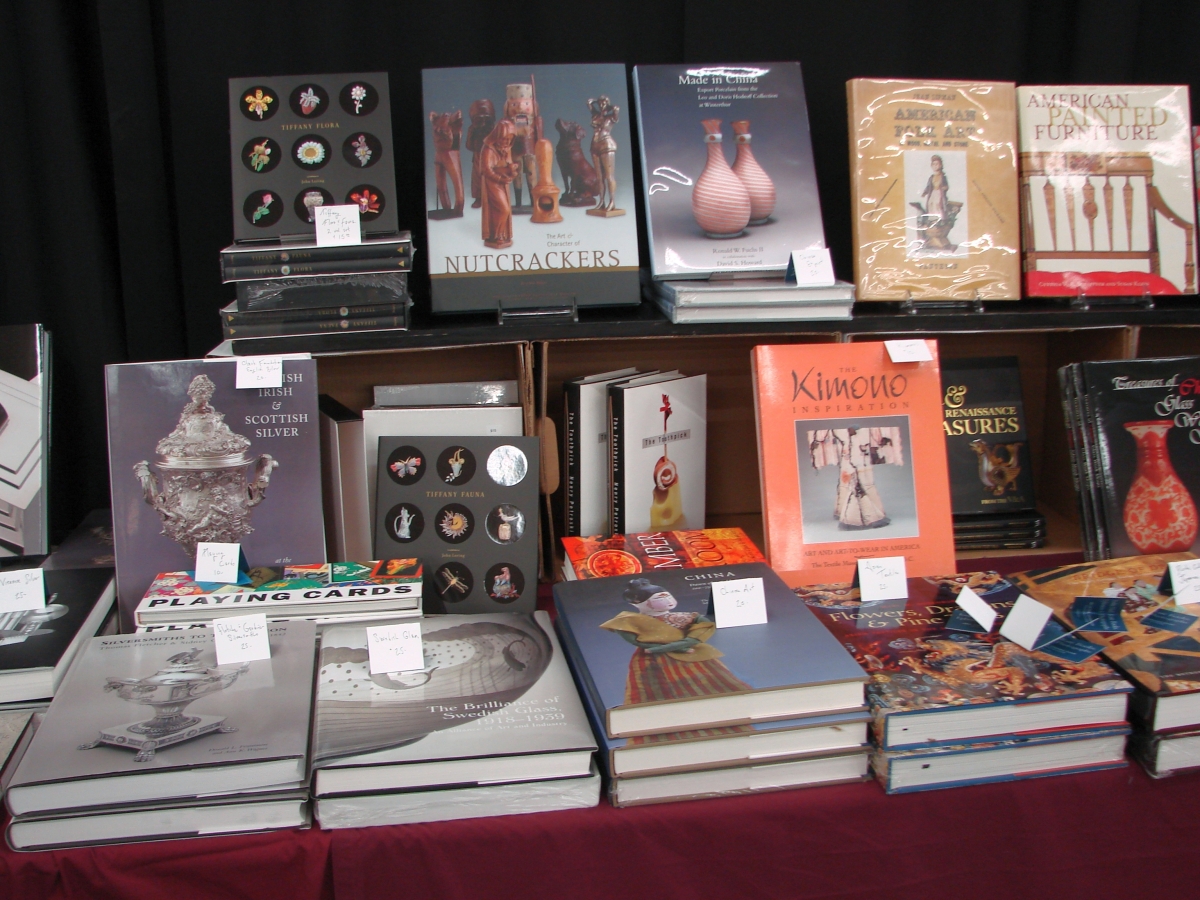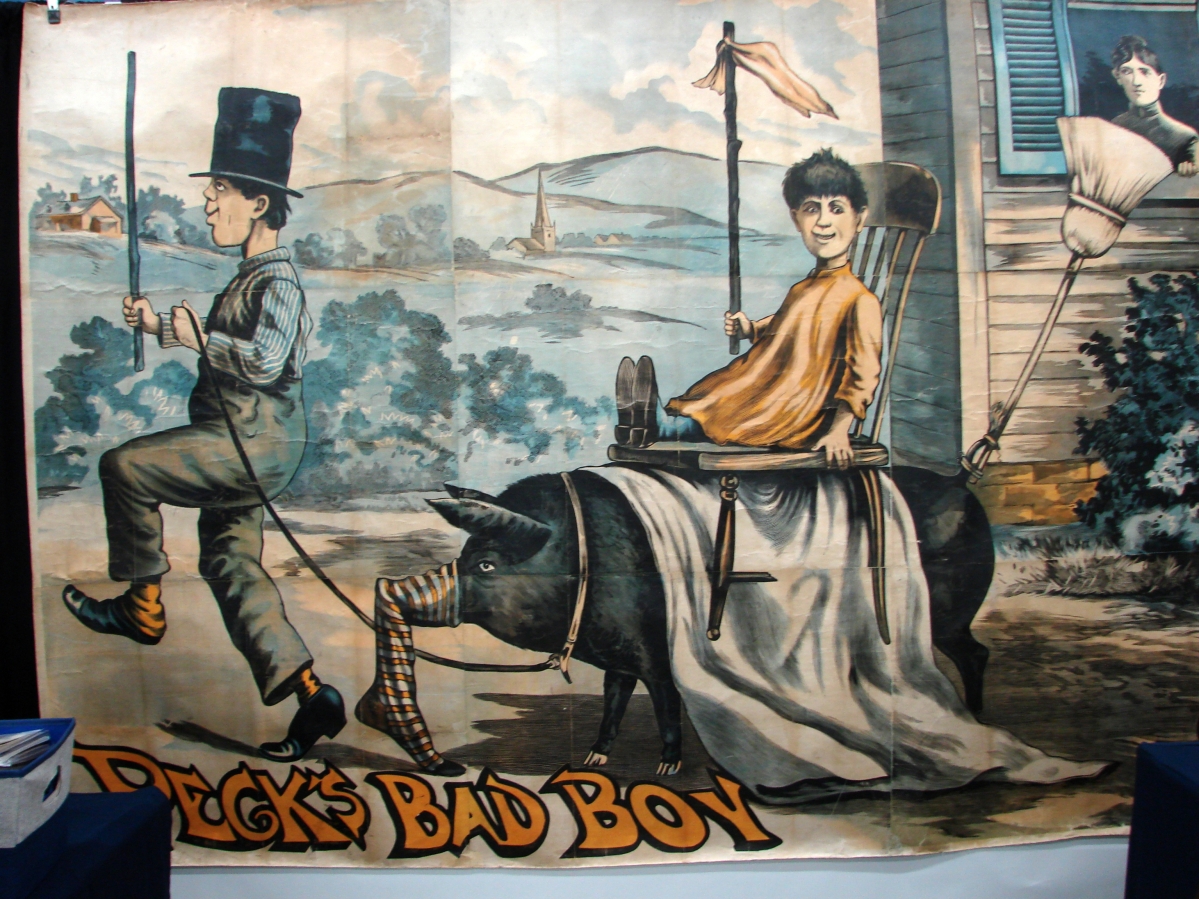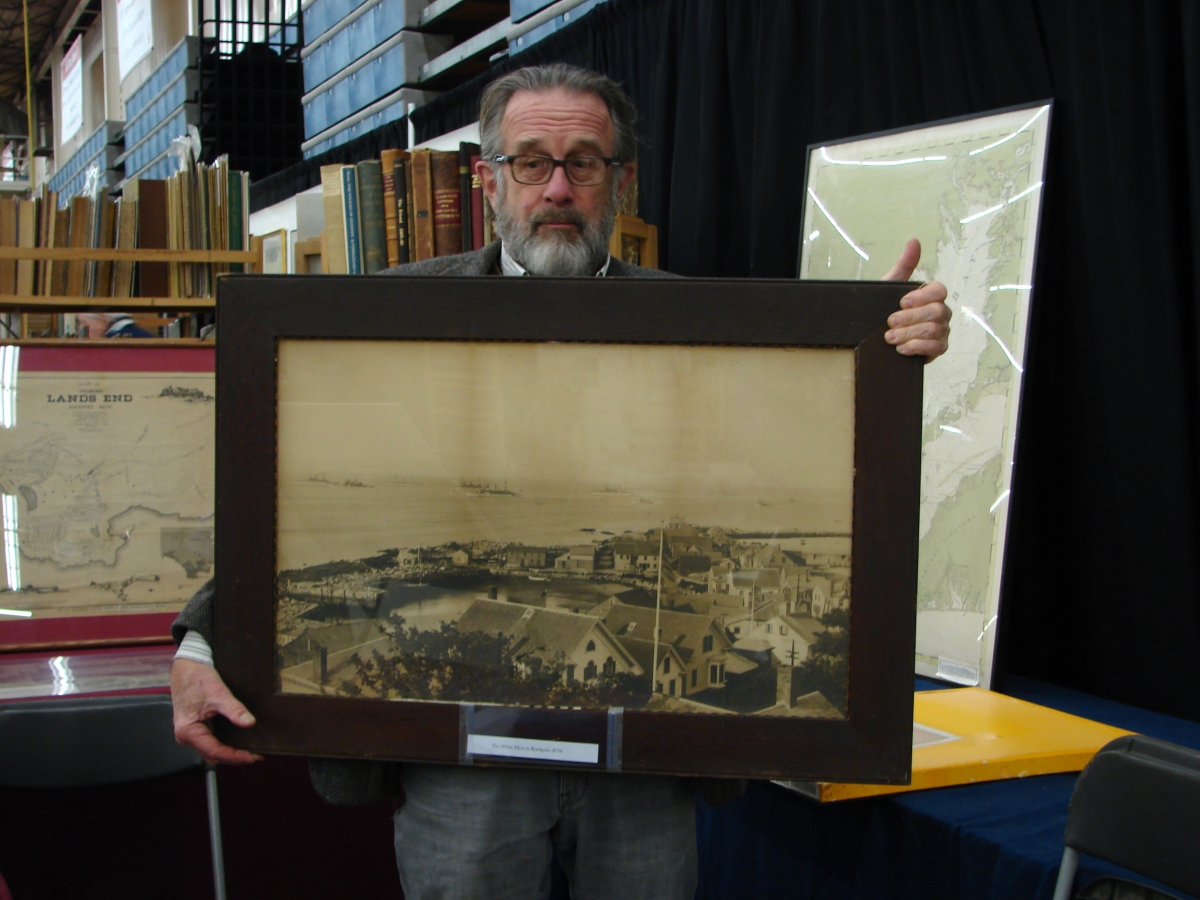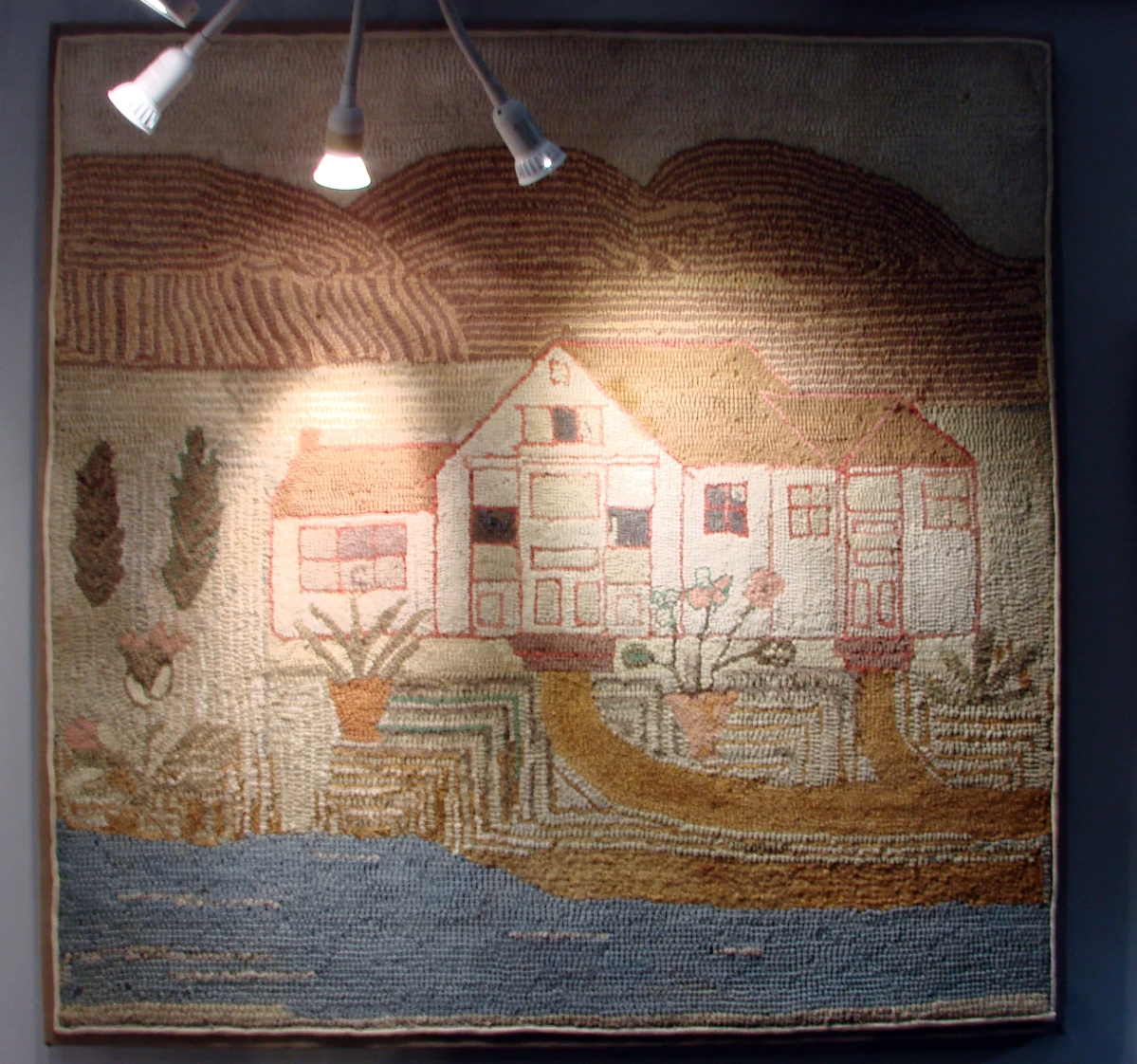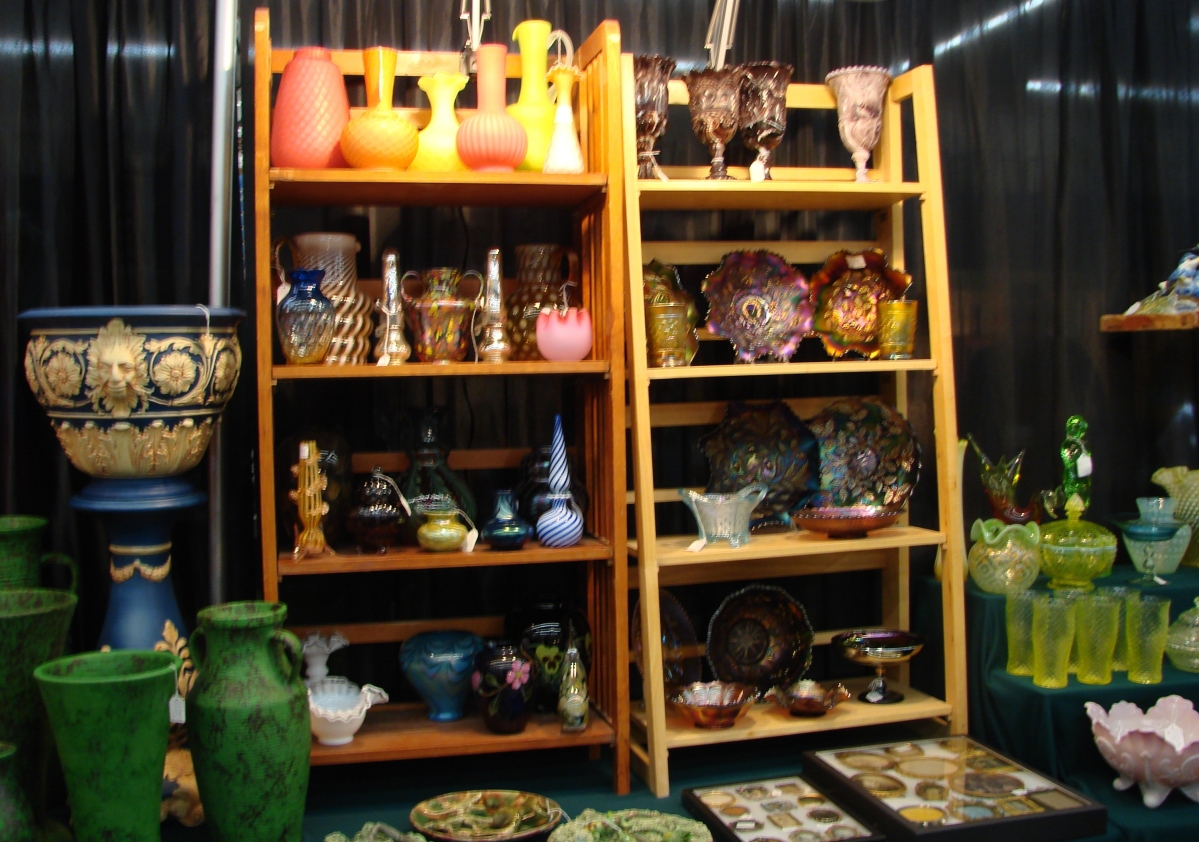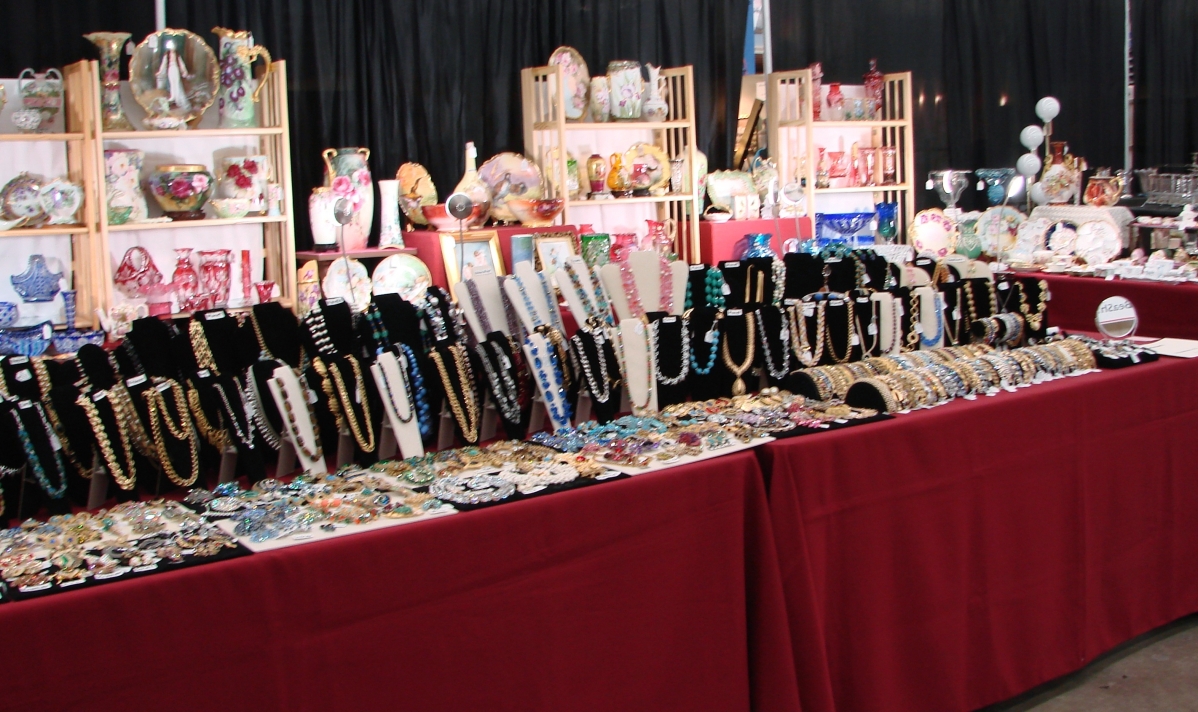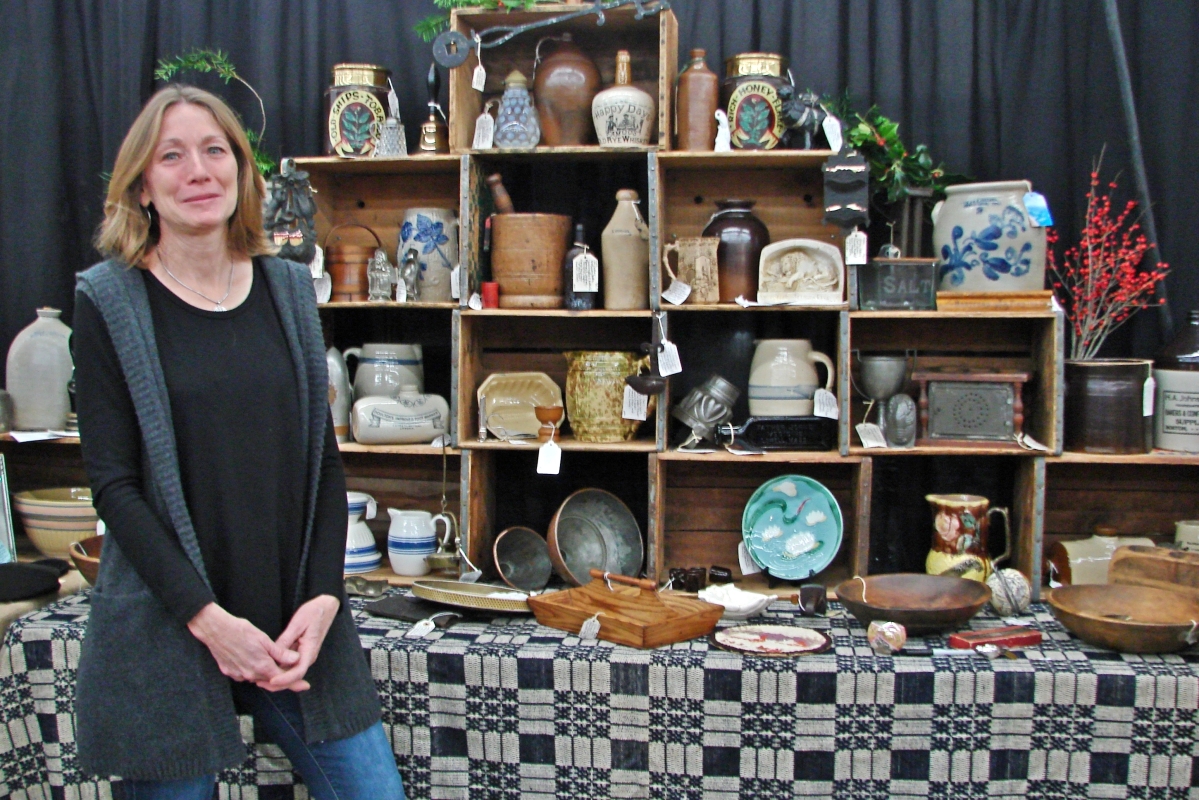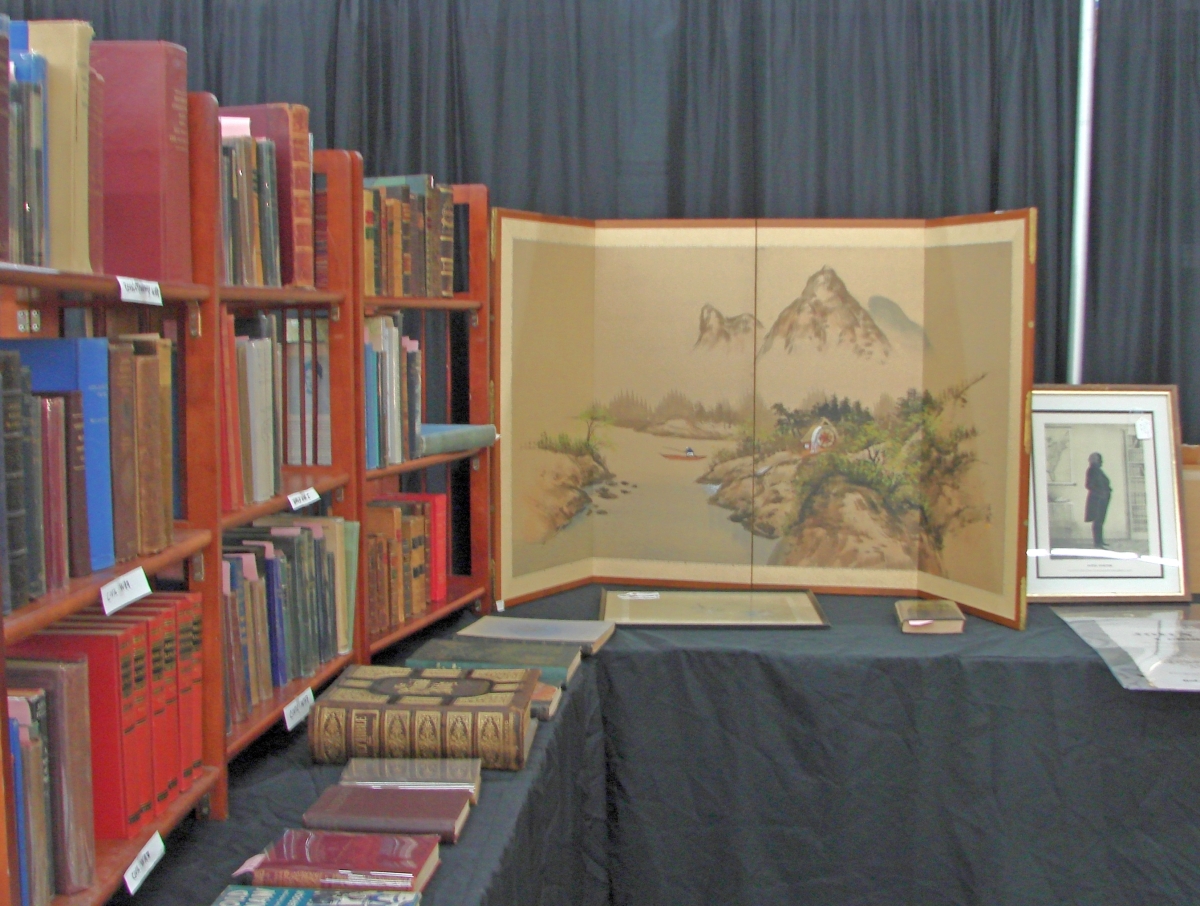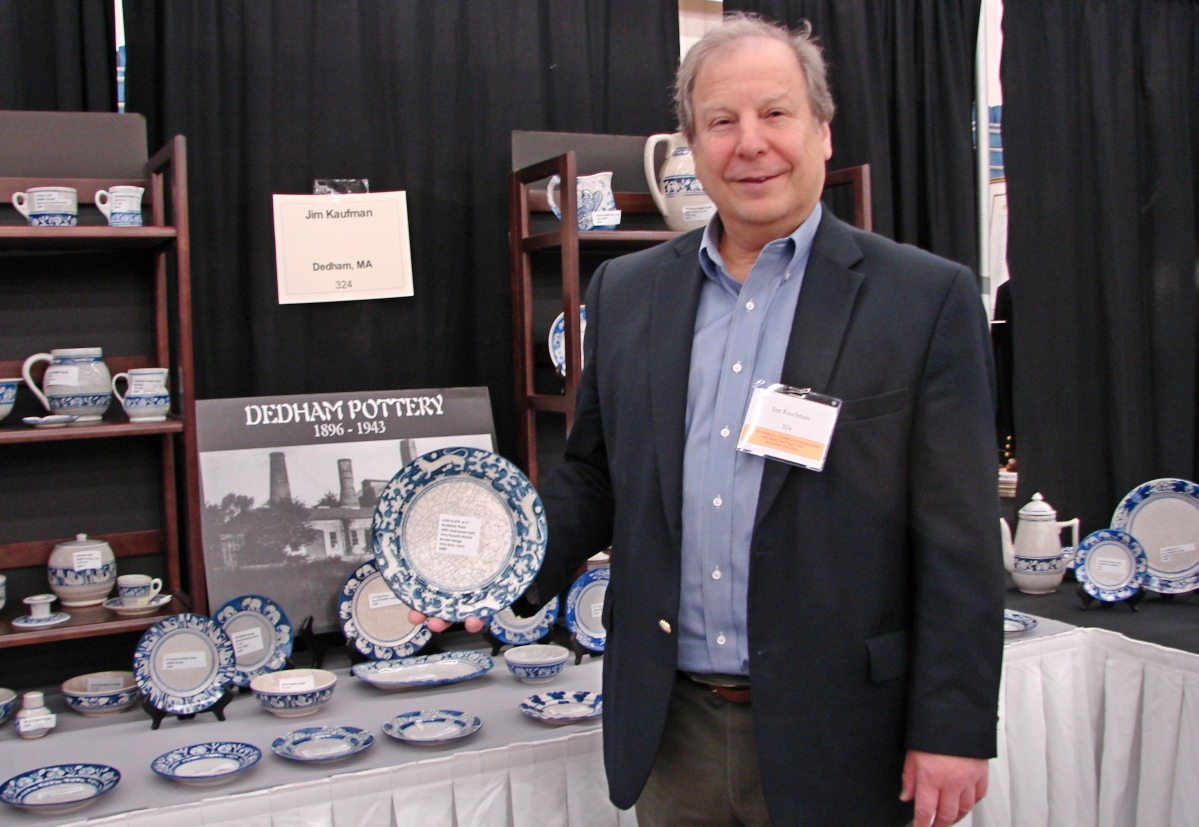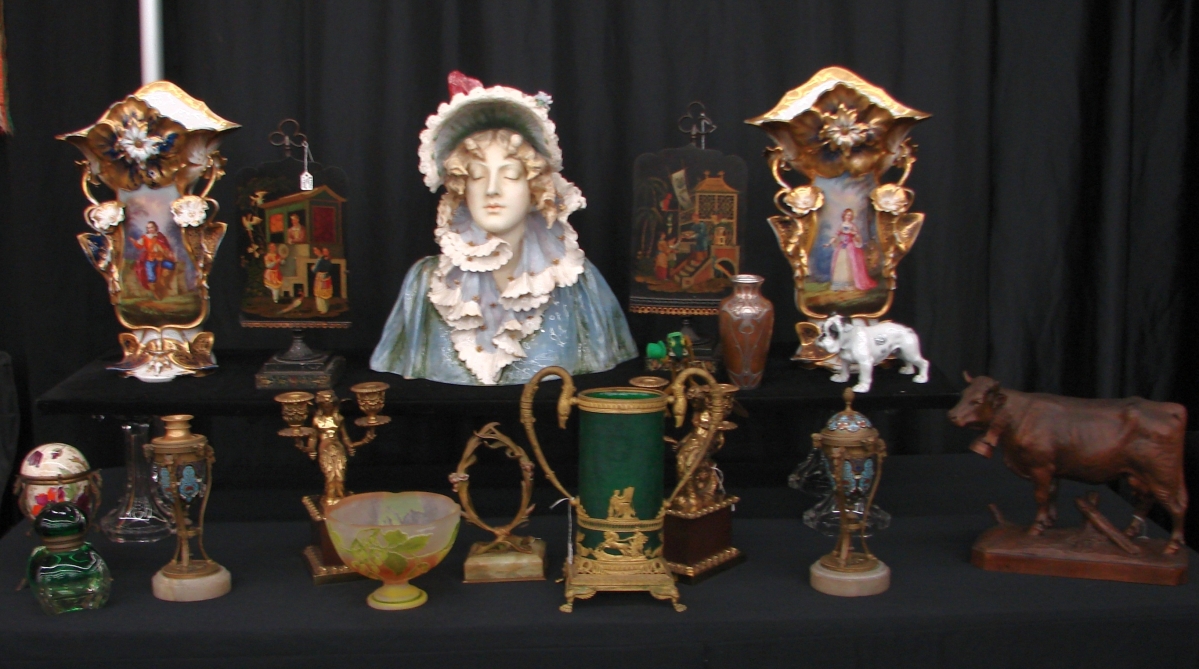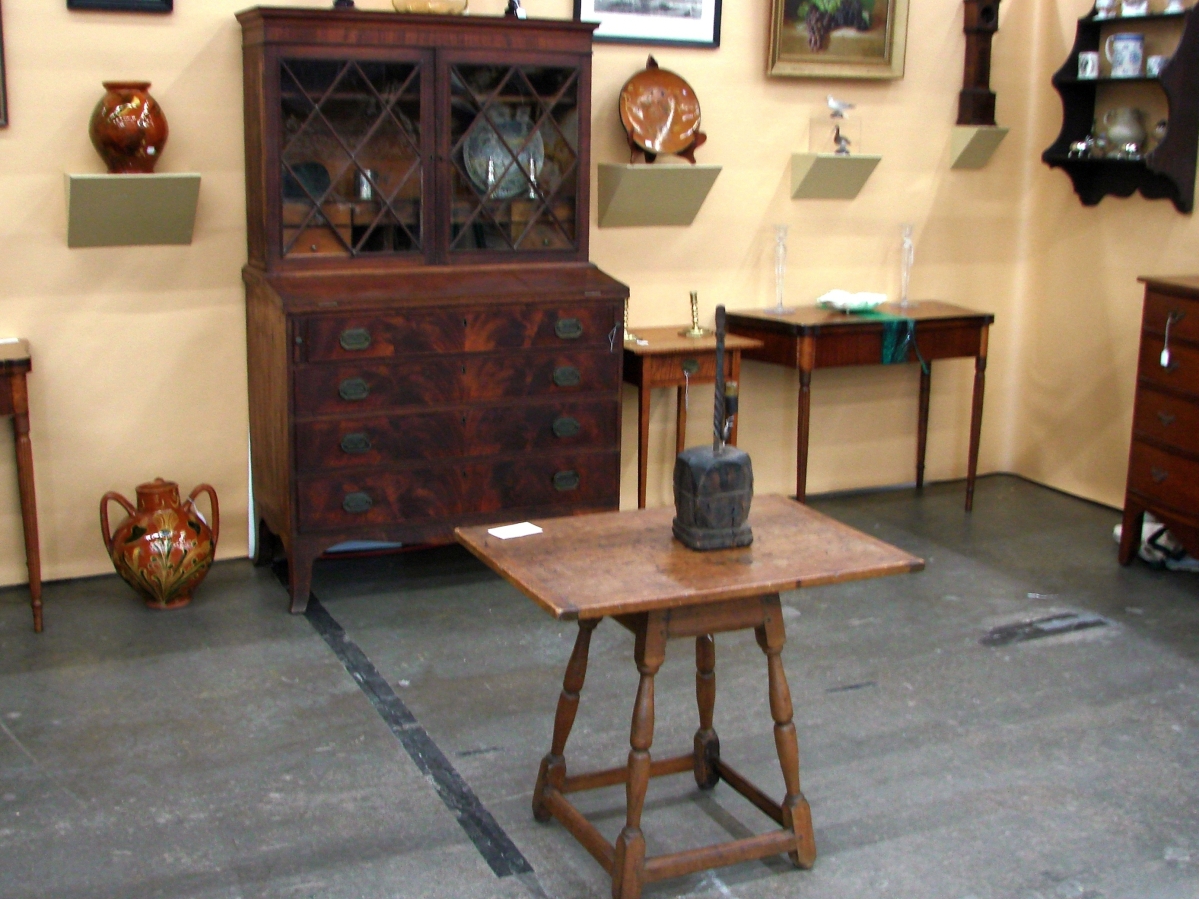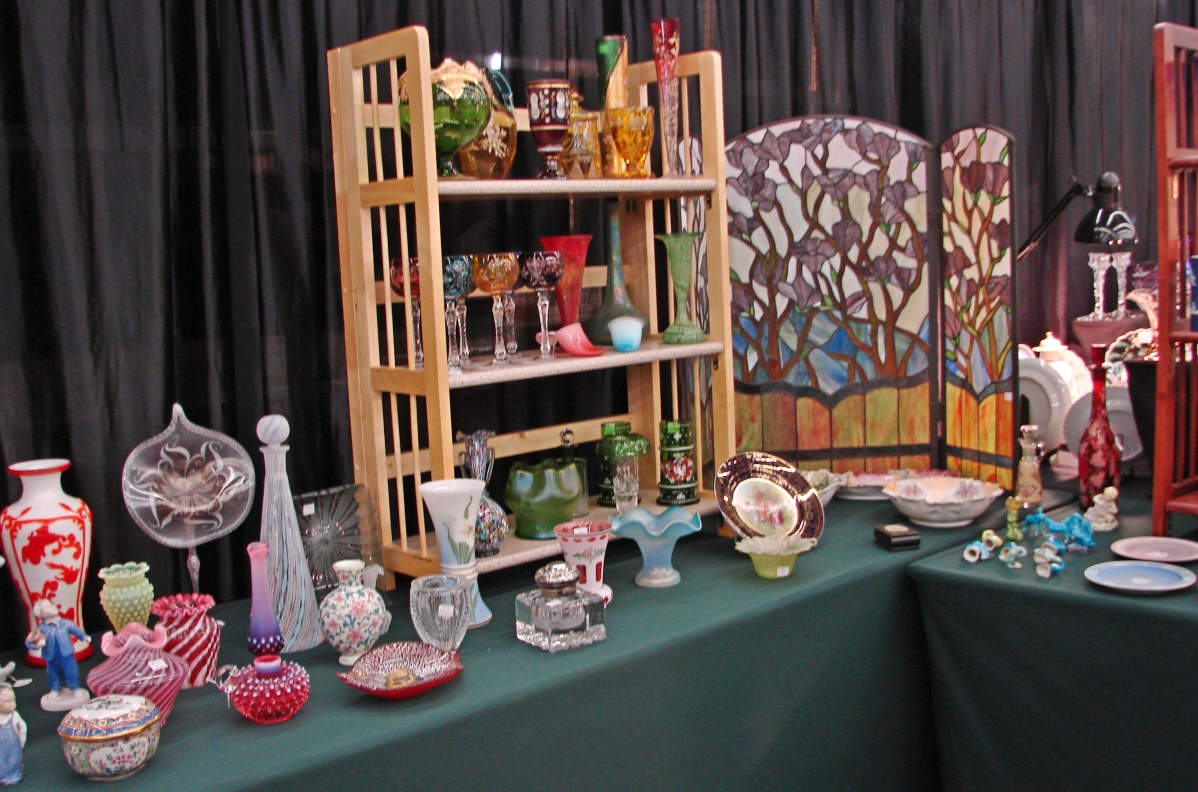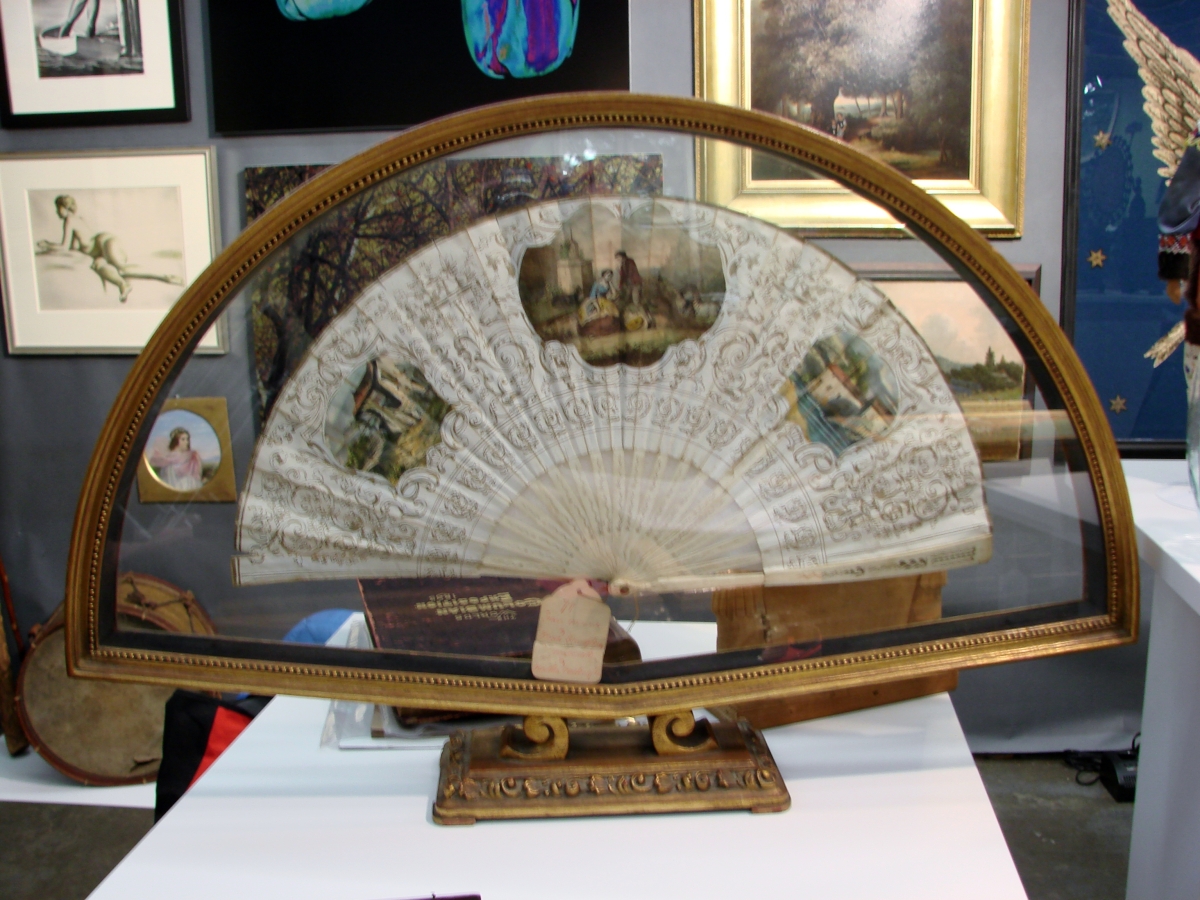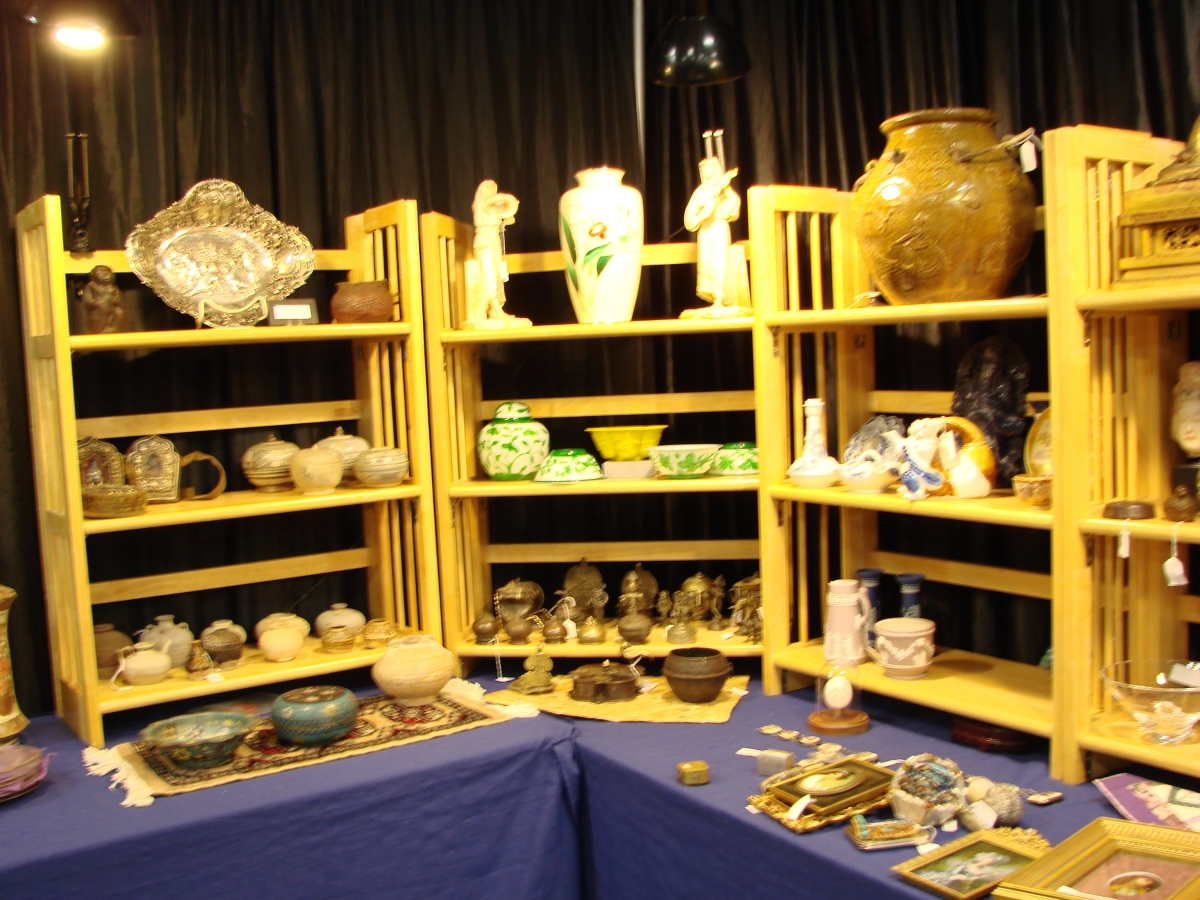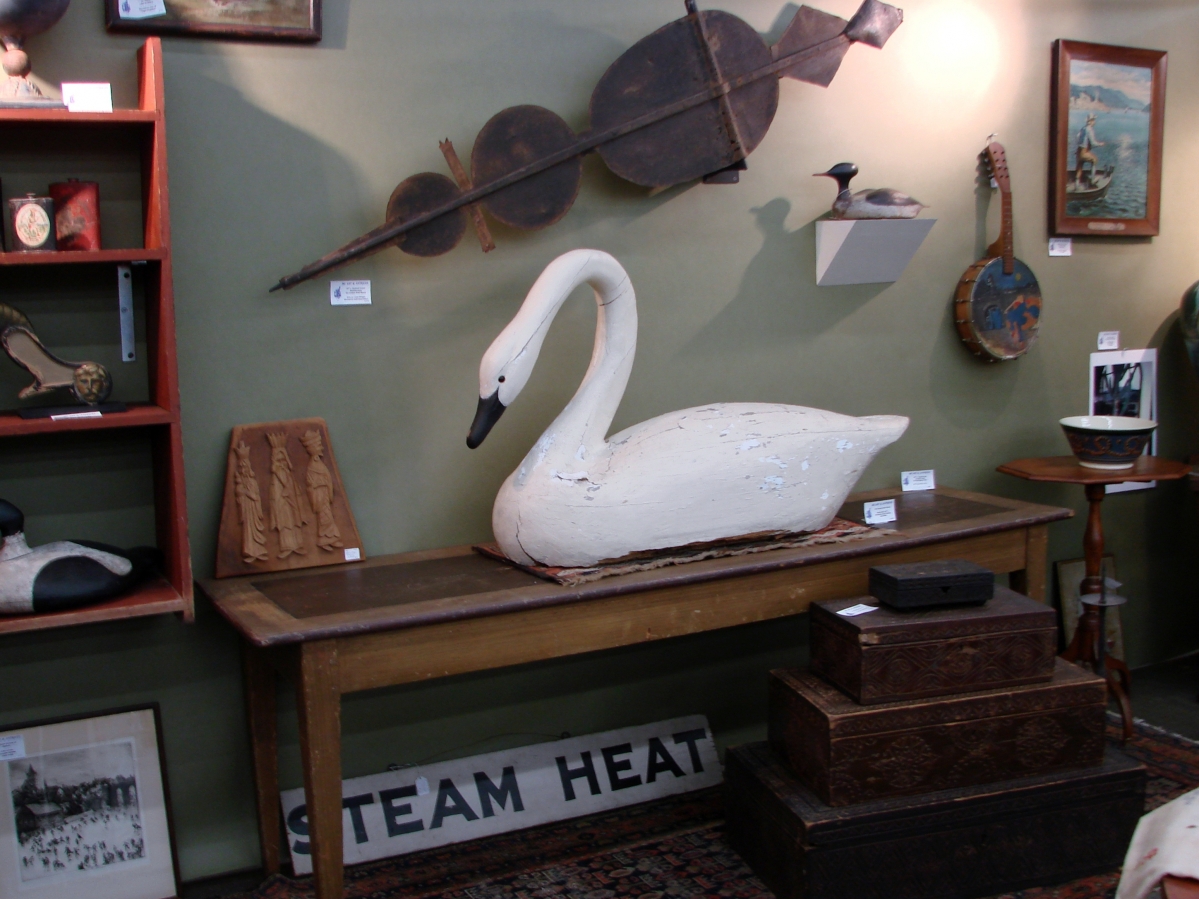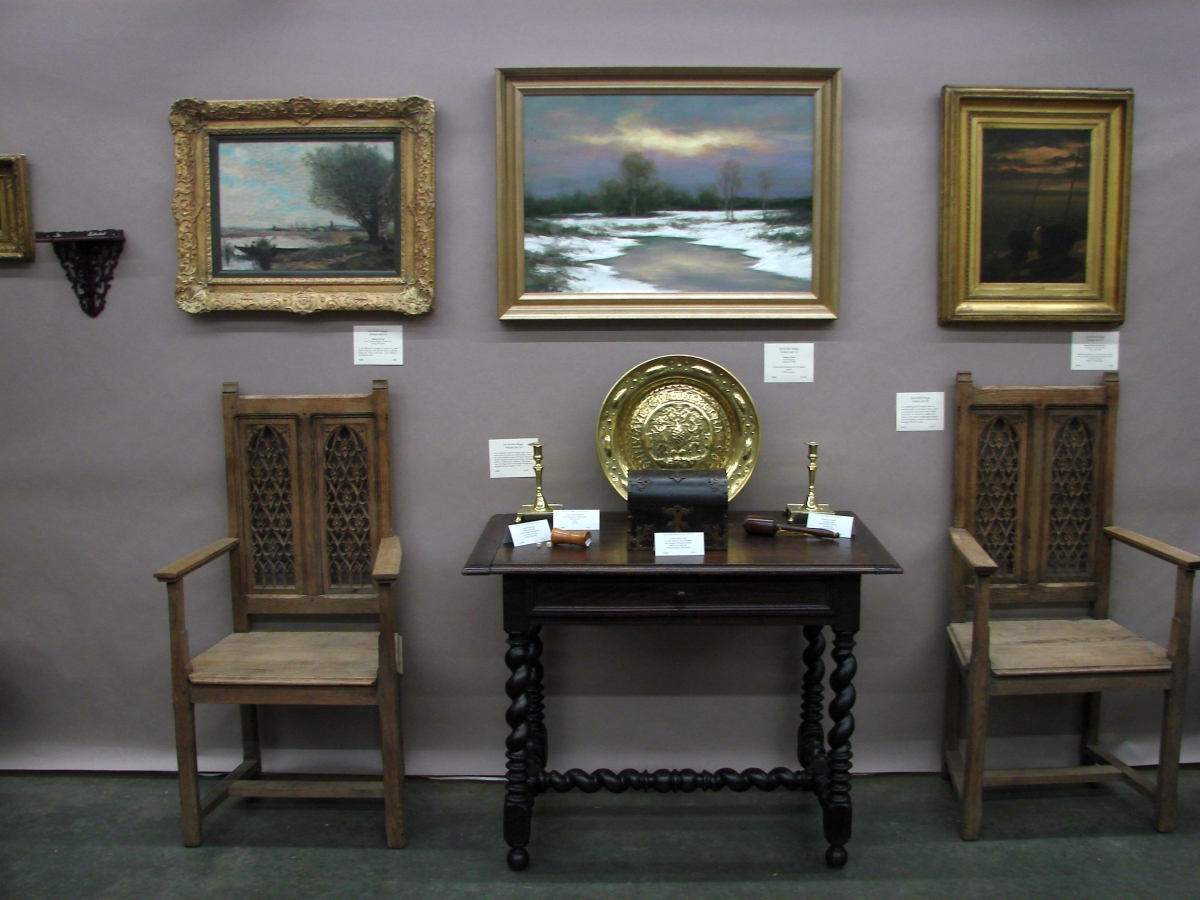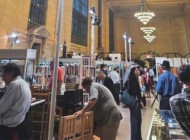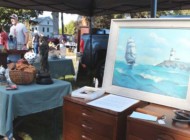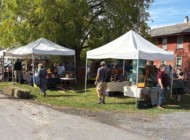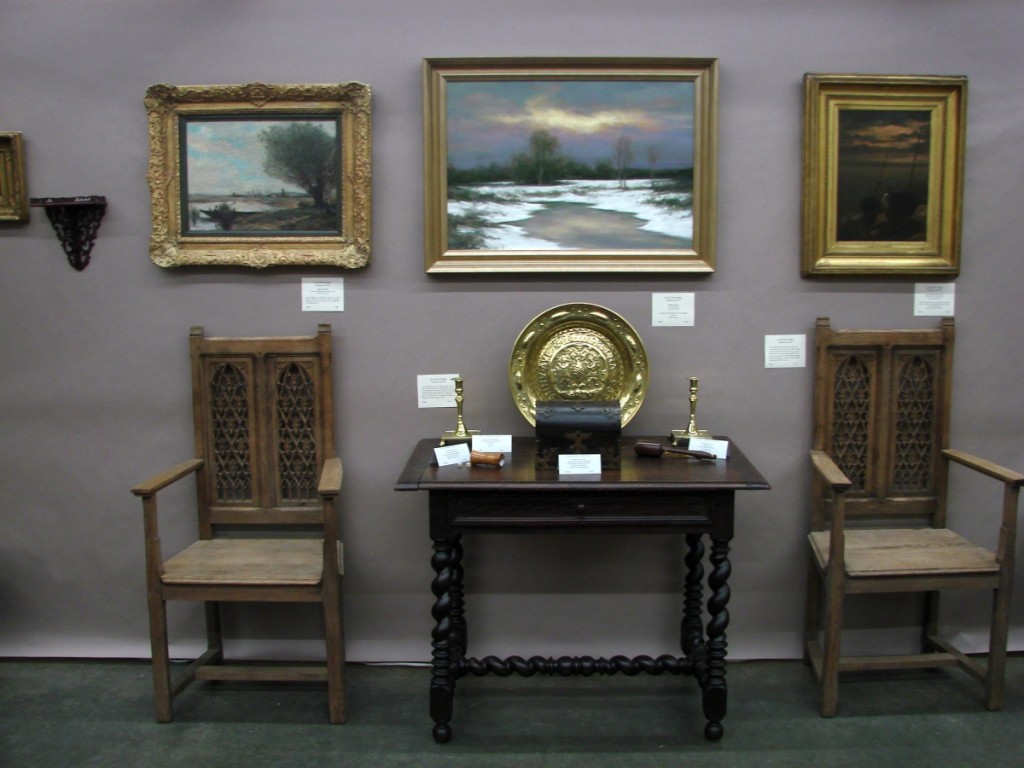
Jan and John Maggs, Conway, Mass., had a selection of early English oak furniture and paintings. The circa 1670 one-drawer table with a two-board top was priced at $975, and the late Eighteenth Century harbor scene by Dutch painter R. Van Son was priced $1,150.
Review and Photos by Rick Russack
WILMINGTON, MASS. – Marv Getman took a gamble, and it paid off. For the last ten years or so, his winter antiques show has been conducted in early January. This year, he moved the show to the second weekend in December, and it will remain there. The facility, the Shriner’s auditorium, has plenty of space, including a spacious, well-lighted lobby, but the past few years, much of the space has not been used. Getman decided to change how he describes the show in his advertising by adding the words “vintage” and “holiday.”
Today, when many promoters bemoan the difficulty of attracting dealers, he increased the number of exhibitors from 85 to 125. Many were doing the show for the first time, and many traveled long distances – from Michigan, Ohio and Maryland, to name a few. Several who have not done the show in recent years returned. Getman also produces antiquarian book fairs and includes book dealers in this show. Last year, there were seven; this year, there were 20.
Getman promotes the show on his Facebook (www.facebook.com/neantiqueshows) and Instagram pages (www.instagram.com/neantiqueshows). Photographs Getman took during set-up on Friday were posted to both platforms, along with a link to his website for a 50 percent reduced admission. The first day of the show, he took additional photos of items for sale, as well as the line waiting to get in, posted them, and again suggested visiting his website for the 50 percent discount. His print advertising, including this paper and The Boston Globe, also promote the discount. Getman’s cable television ads promote the show as well as the half-off admission. But in order to get the admission discount, readers of the print ads and visitors to his social media pages had to go to his website. Getman has an ulterior motive in this: he wants email addresses for promoting future shows. He understood the importance of this years ago and now has more than 10,000 email addresses. He uses them sparingly, promoting the show in advance but sending only a few emails so that potential customers are not turned off. Emails went out to those within 100 miles of the show at the end of the first day. It is no surprise that Getman’s exhibitors have good things to say about him.
The 125 exhibitors offered furniture from the Seventeenth through the Twentieth Centuries; delft and other early ceramics; glass from the Roman era through Lalique; folk art, including paintings and a weathervane priced at more than $20,000; historical documents and prints; Native American objects; Twentieth Century ceramics and art pottery; scientific instruments; holiday items; booths full of silver and jewelry; Asian ceramics and bronzes; and country wooden ware in all colors and price ranges; and far more.
Some of the earliest furniture on the floor, as it often is, was in the booth of Jan and John Maggs, Conway, Mass. Their offerings included a circa 1710 English oak, five-drawer chest with paneled sides that was priced at $1,150 and a circa 1670 one-drawer table with a two-board top that was priced at $975. Martin Ferrick, Lincolnville, Maine, had a four-drawer New Hampshire chest, circa 1810, priced at $2,400. Greg Hamilton, Stone Block Antiques, Vergennes, Vt., had a circa 1900 Empire sideboard priced at $1,275, while Brian Cullity showed a circa 1790-1800 eastern New England secretary/desk, with original cast-brass eagle hardware. The Bourne, Mass., dealer had priced it at $1,750 and said the finish was original.
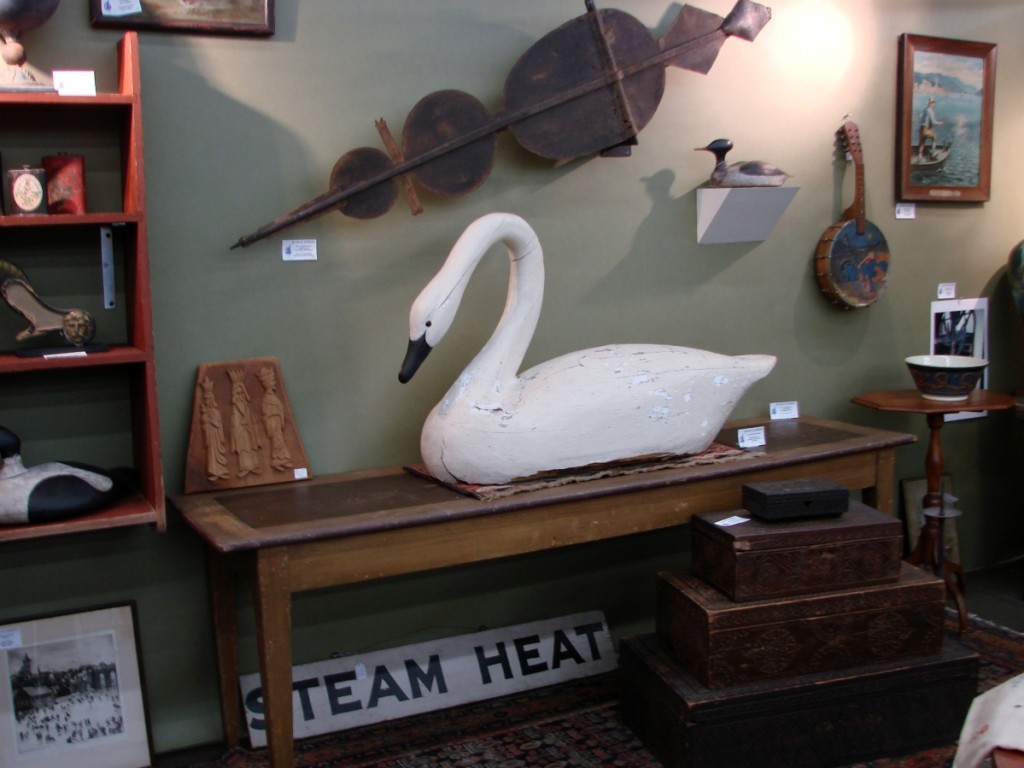
There were several nice decoys at the show, including this large white swan, in the booth of MG Art & Antiques, Merrimac, Mass.
Jim Kaufman, vice president of the Dedham Historical Society, is an expert on Dedham pottery, and that was all he had in his booth. He said that this year marked two anniversaries significant to collectors of Dedham. Not only is it the 75th anniversary of the closing of the original Dedham Pottery, but it is also the 50th anniversary of the landmark exhibition of Dedham Pottery at the Dedham Historical Society. Kaufman’s booth included early, rare examples of Dedham with molded, as opposed to painted, borders, and pieces made by Hugh Robertson, the founder of the pottery. Kaufman later said, “The show was a success from a sales standpoint. I experienced multiple mid-price-range sales. That’s a sign of strength, as during slower periods, it was only the rare items that sold. I was also heartened by the level of interest. As I specialize in one category, Dedham Pottery, show attendees tend to strike up a conversation about my topic. At this show, many engaged in long conversations to learn more about the history of the pottery. It seemed to be a crowd of serious collectors eager to learn about something new or in diving deeper into a topic they knew only a bit about. All very positive signs for this strengthening market.”
Probably the most expensive item on the floor was a ram weathervane with a good surface and zinc head, attributed to Cushing and Son, circa 1880s. It was priced at $22,500 by Marvin Weis Folk Art and Antiques, Baltimore, Md. He also had a selection of decoys, including a circa 1920 full-size black duck by Elmer Crowell, $2,695, and a repainted Canada goose by Joe Lincoln, priced at $1,795. There was another good decoy, a large white swan, in the booth of MG Art & Antiques, Merrimac, Mass., with some repairs. There were a number of trade signs. Greg Gibson, Ten Pound Island Book Company, Gloucester, Mass., blogs about books and other stuff. Gibson decided to photograph many of the trade signs and included the photos, along with some comments on his “morning after” blog, at www.tenpound.com.
The Colebrook Book Barn, Colebrook, Conn., had an unusual theatrical poster for the production of the play Peck’s Bad Boy. The book by George Wilbur Peck was published in 1883 and was an immediate bestseller. A stage play based on the book was produced shortly thereafter. The play starred George M. Cohan, and it is possible that the young boy depicted in this poster was Cohan. The brightly colored poster filled the back wall of the booth and was priced at $6,000.
Post-show feedback from dealers was positive. David Thompson of David Thompson Antiques & Art, South Dennis, Mass., said, “We saw old friends as well as new customers of all ages. We were selling antiques and books as Christmas presents, including some that had to be put in bags quickly, so a spouse or partner wouldn’t see them. Our best sale was a callback after closing on an important antique photograph.” John Leger, Le Bookiniste, Hopewell, N.J., said, “In five years of doing fairs, I have never tried to sell lithographs. I’m a bookseller, not an art dealer. But for Wilmington, I decided to give it a try because of the heavy emphasis on art and antiques. I sold two lithographs by the Chinese/French artist Zao Wou-ki. I bought them in Paris about 25 years ago. Both were from the 1950s, nicely framed, and were New Year’s cards for Zao’s friends. They sold to different buyers for substantial prices. Looks like this is a good fair for lithos, so I’ll bring more next year.”
Greg Hamilton said, “I sold a nice winter scene by C. Gordon Harris; two very nice Nineteenth/Twentieth Century merganser decoys; a large carved pilot house eagle from Maine; a Moscow silver gilt reliquary cross from 1863; and a Nineteenth Century French rose-cut diamond, gold and enamel pendant; some small furniture; and numerous small items. I had a very good show.”
Marv Getman said, “I feel good about the change in dates. The dealer count was way up, and attendance, while not increasing the way I hoped it would, was still up. I know that several dealers who had been undecided about doing the show came through on Saturday, and some told me they’ll be with us next year. There’s no question in my mind that the emails work for us and the half-off coupons work. We had 2,400 registrations for discount passes before the show opened. People don’t even have to print the coupons – just showing the coupon on their phone is enough. I think adding the word “vintage” to our advertising helps attract a younger crowd. Several dealers commented on the number of younger buyers in the crowd, and I’m sure that’s a result of what we’re doing on social media. The other thing that I think works for everyone is that we keep dealers in the loop throughout. They know what we’re doing, and several promote the show to their email or mailing lists. That is a big help.”
For additional information, www.neantiqueshows.com or 781-862-4039.

